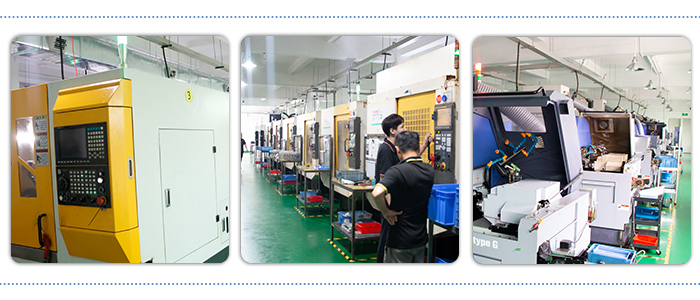As someone deeply involved in the world of CNC machining at YL-Machining, I’ve often been asked to recommend materials for parts that require both strength and corrosion resistance. Among stainless steels, 316L and 304L are frequently compared, especially in industries like medical, marine, and food processing. If you’re trying to decide between these two alloys for your CNC machining project, this comprehensive analysis will guide you through their key differences, strengths, and applications.
Let’s dive in to understand how these two materials perform under different conditions, and how their properties can impact your CNC machining outcomes.
1. Why 316L and 304L Are Popular in CNC Machining
1.1. Shared Characteristics
Both 316L and 304L are austenitic stainless steels, meaning they share certain advantageous properties:
- High Corrosion Resistance: Both excel in environments where oxidation or rust is a concern.
- Good Machinability: These grades are widely used in CNC machining due to their relatively easy workability compared to harder alloys.
- Durability: Excellent strength and longevity, suitable for a range of demanding applications.
1.2. Key Differences
While their similarities make them both versatile, their differences in composition lead to varying performance:
- 316L: Contains molybdenum, enhancing its corrosion resistance, particularly against chlorides and other aggressive chemicals.
- 304L: Offers a more economical option with solid corrosion resistance but falls short in highly corrosive environments.
Question to consider: Are your parts exposed to harsh chemicals or marine environments? If yes, 316L might be the better choice.
2. Corrosion Resistance: A Head-to-Head Comparison
2.1. 316L: Superior in Harsh Environments
The addition of 2-3% molybdenum in 316L significantly enhances its resistance to pitting and crevice corrosion. This makes it ideal for:
- Marine Applications: Saltwater environments.
- Chemical Processing: Equipment exposed to chlorides and acids.
2.2. 304L: Cost-Effective for Mild Conditions
While 304L lacks molybdenum, it still performs well in less aggressive environments. It’s an excellent choice for:
- Food Processing: Resistant to organic acids and cleaning agents.
- Indoor Equipment: Applications where exposure to moisture or chemicals is minimal.
3. Strength and Durability in CNC Machining
When it comes to CNC machining, material strength is often a deciding factor. Let’s explore how 316L and 304L compare:
3.1. Tensile Strength
- 316L: Typically offers a tensile strength of 485 MPa, slightly higher than 304L.
- 304L: Has a tensile strength around 455 MPa, making it slightly less robust but sufficient for most general-use applications.
3.2. Yield Strength
- 316L: With its enhanced alloy composition, it withstands higher stress before deforming.
- 304L: Slightly lower yield strength, suitable for components not subjected to high stresses.
Practical Insight: If your parts must endure high loads or extreme environmental conditions, 316L provides better long-term performance.
4. Impact on CNC Machining: What to Expect
Material properties influence not only the performance of the finished part but also the efficiency of the machining process itself.
4.1. Machinability
- 304L: Easier to machine due to its simpler composition and lower work hardening rate.
- 316L: Slightly more challenging to machine because of its higher molybdenum content and toughness.
To optimize CNC machining:
- Use sharp tools and coolants to reduce heat buildup.
- Adjust cutting speeds and feed rates for each material.
4.2. Surface Finish
Both grades yield excellent surface finishes, but 316L’s resistance to corrosion ensures that the finish remains pristine longer, even in harsh conditions.
5. Applications: Where Each Material Shines
5.1. Best Uses for 316L
- Marine Components: Boat fittings, valves, and pumps.
- Medical Devices: Surgical tools and implants, thanks to its biocompatibility.
- Chemical Processing Equipment: Tanks, pipes, and reactors exposed to corrosive agents.
5.2. Best Uses for 304L
- Food and Beverage Industry: Cookware, storage tanks, and food processing equipment.
- Architectural Components: Handrails and cladding in less corrosive environments.
- General Fabrication: Affordable and versatile for everyday applications.
6. Cost Considerations: Budget vs. Performance
Cost is often a determining factor in material selection. Here’s how the two stack up:
- 316L: Generally 20-30% more expensive due to its enhanced properties.
- 304L: A cost-effective option for projects where extreme corrosion resistance isn’t necessary.
Decision Tip: If your application doesn’t demand high corrosion resistance, opting for 304L can save you significant costs without compromising performance.
7. How YL-Machining Ensures Precision and Quality
At YL-Machining, we’ve worked extensively with both 316L and 304L. Here’s how we guarantee superior results:
- Material Verification: Using certified suppliers to ensure alloy consistency.
- Precision CNC Techniques: Tailoring machining parameters for each material to achieve optimal results.
- Quality Control: Rigorous inspections, including corrosion tests and tensile strength evaluations.
By combining advanced machinery and skilled expertise, we help clients choose the right material for their specific needs.
Conclusion: Choosing the Right Material for Your CNC Machining Project
Both 316L and 304L are exceptional materials, but your choice ultimately depends on the specific demands of your project. If your parts face harsh chemicals or marine conditions, 316L’s superior corrosion resistance is worth the investment. For general-use applications where cost is a concern, 304L provides reliable performance without breaking the bank.
At YL-Machining, we’re here to help you navigate these choices. With our extensive experience in CNC machining and material selection, we can ensure your project achieves the perfect balance of performance, durability, and cost-effectiveness.
Need assistance selecting or machining stainless steel parts? Contact us today to discuss your project requirements!






